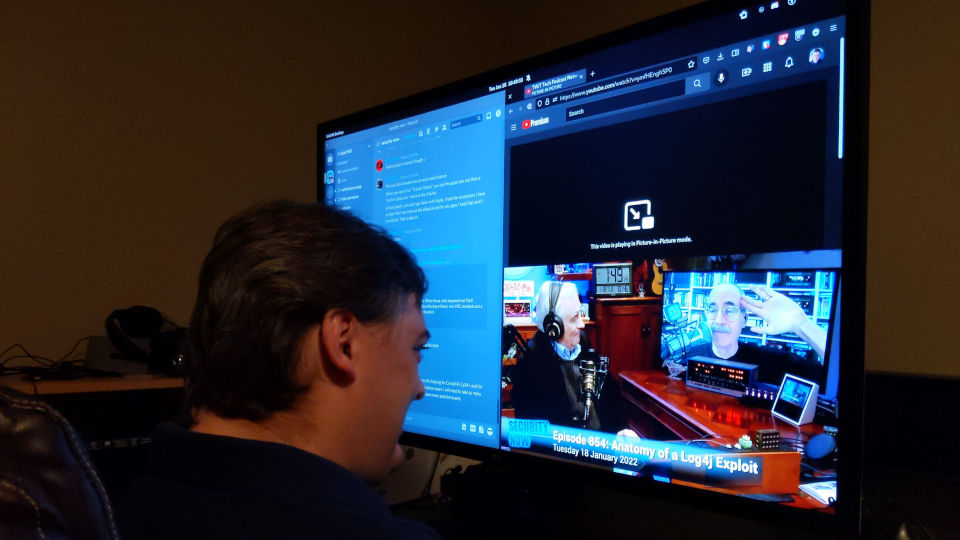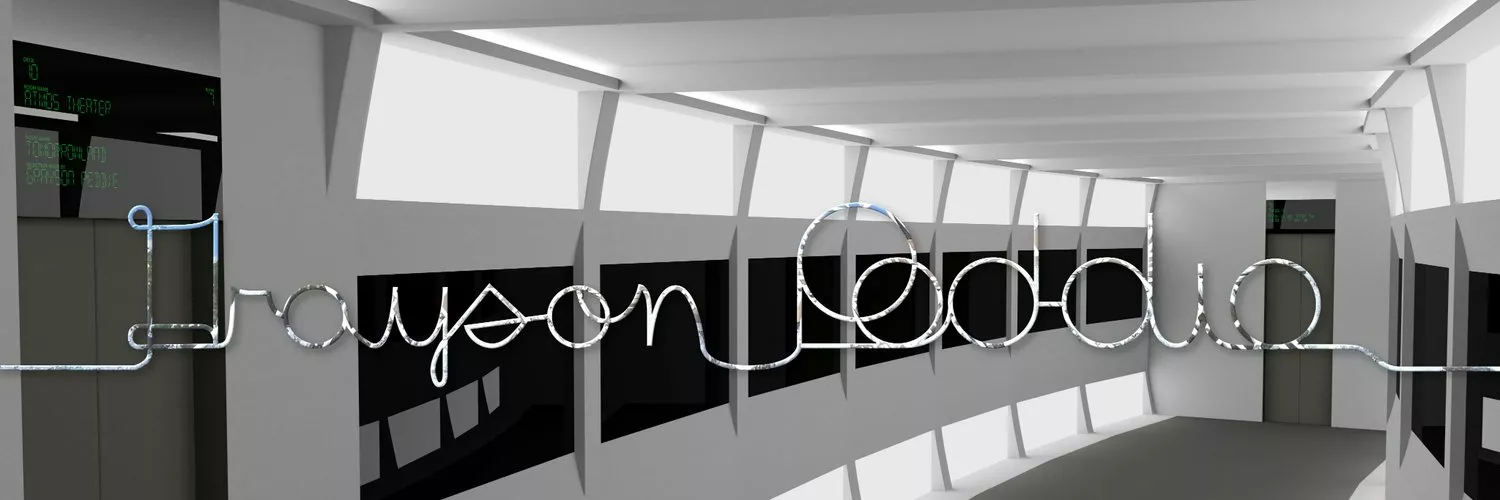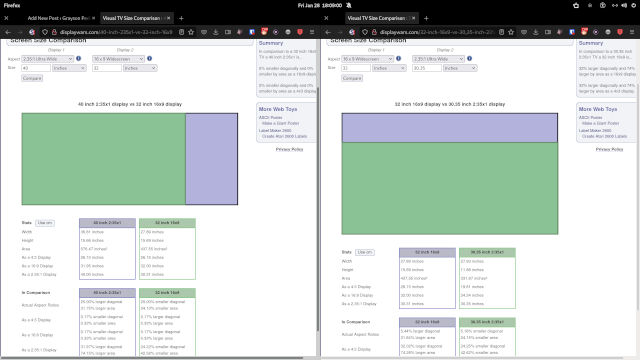Dynamically-Resizing Televisions and Monitors
Let me ask you a question. Do you find yourself wanting a larger TV because a movie looks too small? Do you not like black bars above and below the movie that is formatted for ultra-wide screens? Before reading any further, I want to link to an article that talks about aspect ratios. Now, please note that this article will require anyone to have eyesight, so this will not be suitable for those who are using a screen reader. Of course, it might be helpful if anyone who is blind could visualize in their head. Maybe a Braille measuring tape could help?
Put it simply, a TV has an aspect ratio of 16 to 9, which is referred to 16:9 or 16x9. Most movies today are formatted to 2.35 to 1, or 2.35:1. An aspect ratio of 2.35:1 is for movies and 21:9 aspect ratio can be found in gaming monitors, but according to displaywars.com, it's not the same size. Let me list the dimensions of the two aspect ratios given the size of 100 inches in diagonal.
| Size | Ratio | Width | Height |
|---|---|---|---|
| 100 | 2.35:1 | 92.02 | 39.16 |
| 100 | 21:9 | 91.91 | 39.39 |
So the 2.35:1 format is slightly taller, but the 21:9 aspect ratio is slightly wider. I did some research regarding movies and gaming monitors and I saw that 2.35:1 movies can actually fit in nicely with a 21:9 gaming monitor. It's in the "Movie Watching" section of the article.
So why do I want to talk about aspect ratios and why should screens dynamically resize based on content's aspect ratio? If you have a desktop computer with a 32-inch monitor, do you ever watch movies? I do. Let's consider the size of the movie in relation to the actual screen size. With a 32-inch monitor that I am currently using, the height of the 2.35:1 movie is less than 12 inches. To me, that is very small. If I forget about the information from the left and right sides of the screen in a 2.35:1 format, the result will be about 24 inches in diagonal when cropped to a 16:9 aspect ratio. I have screenshots of what it looks like below.
| Size | Ratio | Width | Height |
|---|---|---|---|
| 24.2 | 16:9 | 21.09 | 11.86 |
| 30.35 | 2.35:1 | 27.93 | 11.88 |
| 32 | 16:9 | 27.89 | 15.69 |
| 40 | 2.35:1 | 36.81 | 15.66 |
Now keep in mind—that the information I have provided is not completely accurate in terms of matching the width and height depending on the aspect ratio, but it should be accurate to less than tenth of an inch. The reason why I provided the measurements is because I want to illustrate that if I forget about the left and right sides of the 2.35:1 movie and focus on the main part of the movie, to me it feels like I am watching a movie on a 24-inch TV or monitor. And of course, I am blind in my left eye, so I would always want to prefer movies to be in 16:9. So, here's my question I would answer myself:
- Would I buy an ultra-wide screen if I want to get rid of the black bars at the top and bottom of the screen when watching 2.35:1 movies?
- If I do that, then would I want to buy a taller screen so I can get rid of the black bars on the left and right side of the screen when watching 16:9 content?
To answer my question, I only care about 16:9 aspect ratio when using my PC monitor and I do not like the idea of using 21:9 aspect ratio for general PC use because of my limited peripheral version. Plus, if I am going to watch 4:3 content such as Star Trek: The Next Generation on Paramount+, I am used to watching 4:3 shows on a 16:9 screen. Watching a 4:3 content on a 21:9 monitor or 2.35:1 screen makes it look so tiny, so 16:9 offers a nice balance between 4:3 and 2.35:1 aspect ratio. I do not want to see the grayish black bars all the time due to LCD technology and LCD technology regardless of the display type is terrible for dark room.
That's why, in the meantime I am going to purchase a 42" LG OLED TV in the near future. Aside from burn-in issues (I won't talk about that in my post), that 42" TV would be very large as a monitor, but it offers a nice balance between 48-inch being too large for PC use and 32-inch being too small for watching movies. Hopefully I can build a nice dedicated home theater where aspect ratios for different content such as movies, TV shows, and games are not a concern anymore. Hopefully in about 5 to 7 years from now and I can stay with a 32" monitor for my computer! But instead of LCD, it will be either OLED or any new technologies where burn-in is a thing of the past. This is what I have currently setup for now.
Here's my setup of how I use my computer. Having my monitor up close to me is great so I do not have to use a magnifier all the time.

If you become a member of Club TWiT, you can participate in Discord chat. I am a huge fan of Security Now! when it comes to the news regarding cybersecurity. Steve Gibson is the main star of the show for Security Now!
And now comes to the main topic of my article: a dynamically-resizing screen. I have a video about how this will work in the future.
You can download a video here if you want to watch it offline. This is great for those who use a text-based web browser such as lynx or for those who do not fast-enough broadband connection to watch high-quality videos.
The monitor or TV has two screens behind the main screen. From the start of the video, the screen shows a 16:9 format but with a 2.35:1 movie playing on screen (it's just a still image that I made by making a screenshot of a paused YouTube video). In order to get rid of the black bars at the top and bottom of the screen, the TV will slide the screens outward to the sides and then move towards the main screen. Once done, the two screens activate and now the entire movie fills up the entire screen. The process reverses when switching back to 16:9. In that case, that is if the content is 16:9 instead of 2.35:1. My point is that people should not worry about choosing screen sizes depending on the variety of content with different aspect ratios. If there's enough room on the left and right side of the screen, then getting a dynamically-resizing TV would be the way of the future. In my case, I can keep my 32" screen as my PC monitor and when watching movies, I can tell the screen to dynamically widen the screen to 40 inches in diagonal. Yes, that means the height stays the same, but according to displaywars.com, it's only a difference of 0.03 inches in height.
Sure, I get that movies with 2.35:1 aspect ratio is far more immersive for most people compared to movies made in 16:9 format. I get it! And please excuse me for ranting and for being blunt, but why don't the producers and artists in the movie industry come up with movies with 4:1 or wider for those with perfect eyesight and limitless peripheral vision? But until manufactures come out with dynamically-resizing screens, I would be happy to go with a 42" OLED TV that is large enough for watching movies and content that is designed with ultra-wide aspect ratio in mind. Still, I would always prefer 16:9 movies as I would find that to be a lot more immersive compared to 2.35:1 or 21:9. Anyway, I wrote this article in hopes that TV/monitor manufacturers will develop bezel-less technologies that will adopt to the size of content in the future.
Article published: 2022-01-30 13:33
Categories: Visionary Living and Exploring Tomorrow, Electronics,



